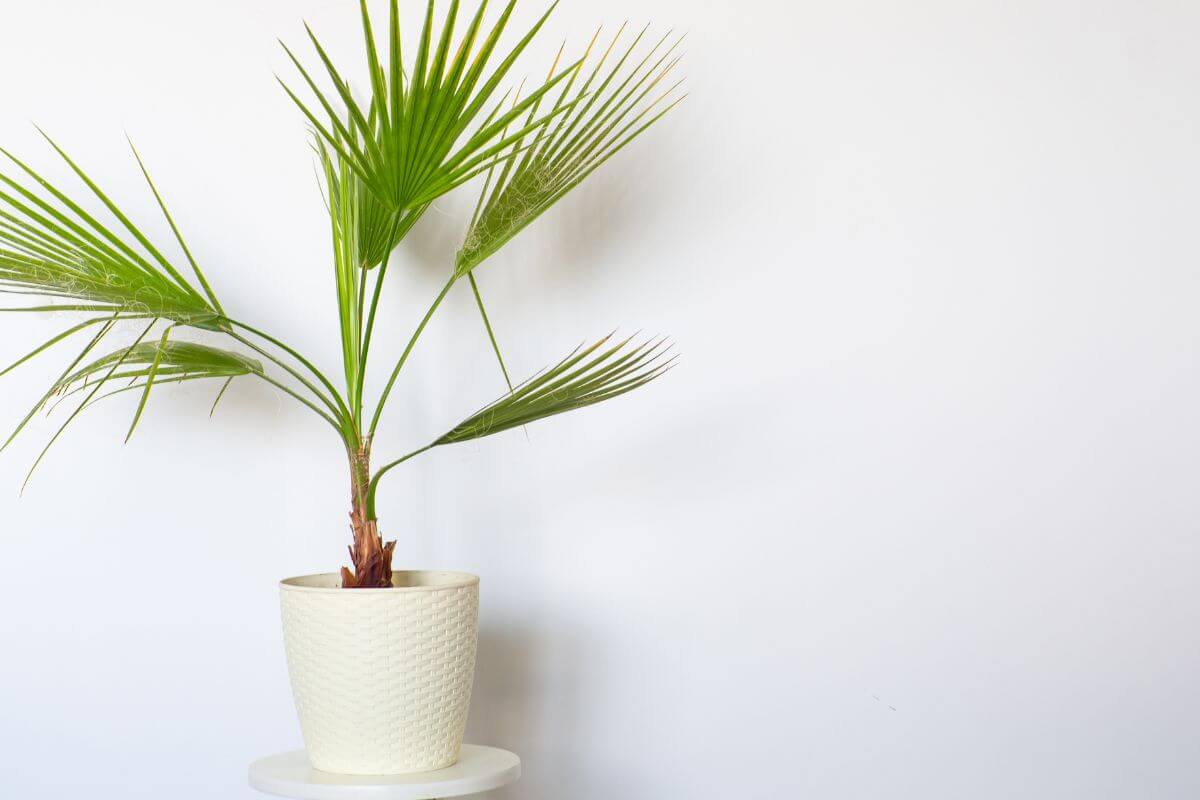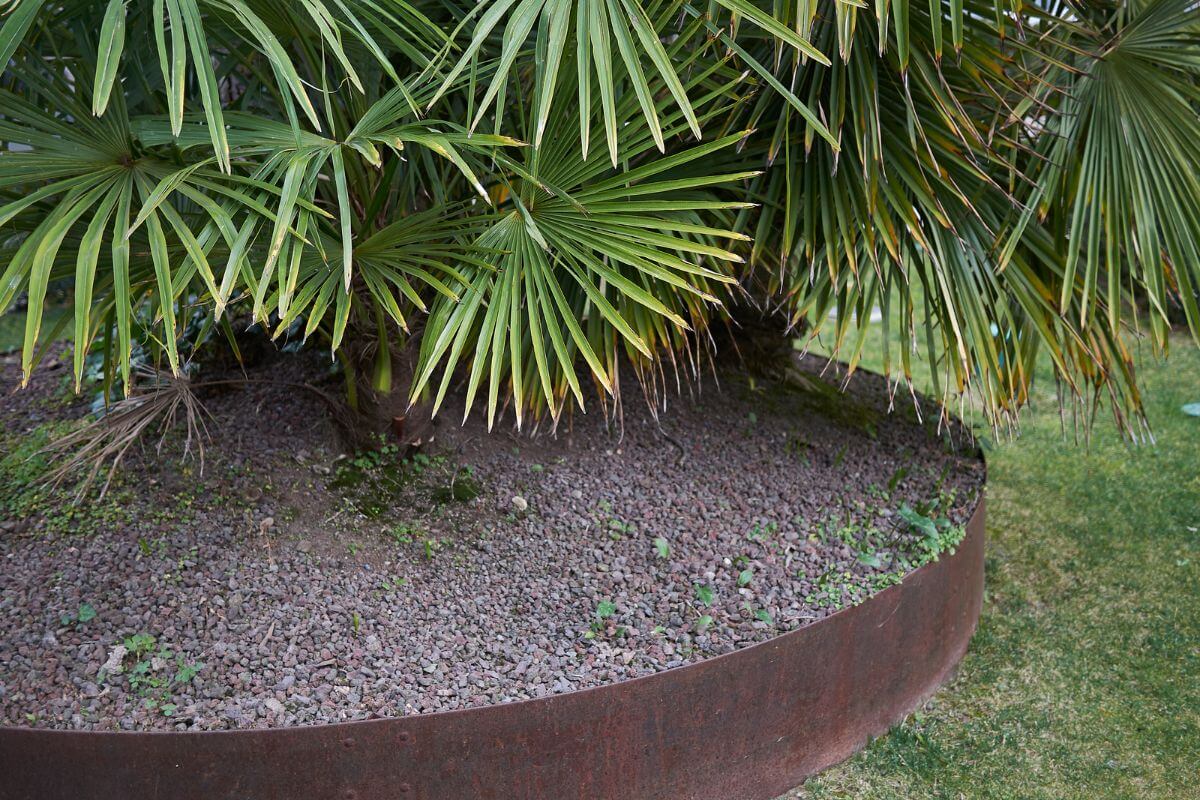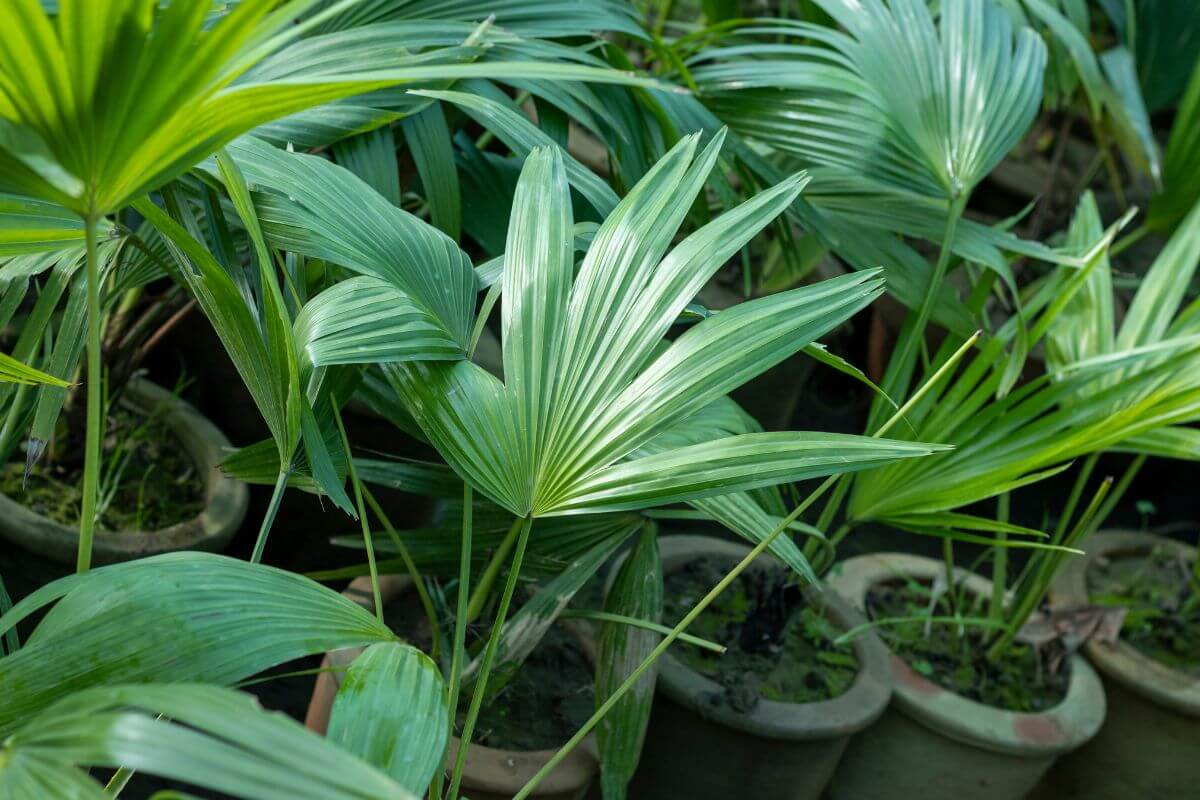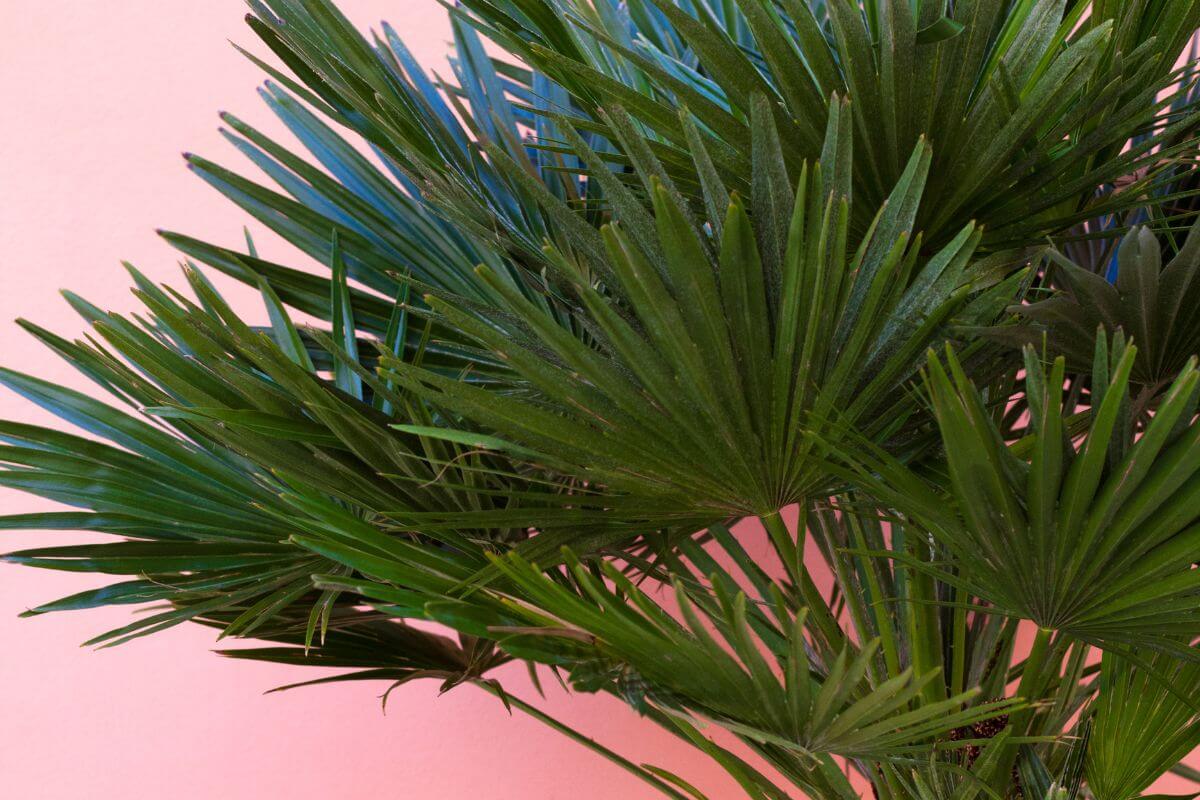One of the most popular and visually striking palm trees cultivated as indoor houseplants is the Fan Palm. If you want to create a tropical corner in your home, the Fan Palm will do just that if you have a sunny room or spot for positioning this plant.
In this guide, learn all about them and how to care for the fan palm to grow successfully.
Fan Palm Overview

The Livistona chinensis or Chinese Fan Palm is a slow growing palm that features a single tree trunk that grows upright with large fronds in the form of fans.
Native to China, Taiwan, and Southern Japan, it is a member of the Arecaceae family. These palm fronds can grow as wide as six feet, so you’ll need a bit of space to grow this palm.
When grown outdoors, the Fan Palm can grow from thirty to fifty feet tall. The average lifespan of these trees is approximately forty or so years.
There are also a variety of fan palm species for different regions.
There is the Chamaerops humilis, the European Fan Palm that is also grown as an indoor plant with several stems with fan shaped foliage. Stems usually grow to four feet long and fronds to approximately two feet in diameter when they mature.
The Washingtonia Filifera, aka California Fan Palm or Desert Fan Palm, is the largest sized native palm tree in the Continental United States. As an outdoor palm, it will grow as high as sixty feet.
Native to Africa is the Hyphaene petersiana or Real Fan Palm, more commonly called the Makalani Palm.
Regardless of which species of fan palm you select, choose a healthy looking one when you purchase. Palms that appear to be dried out with browning fronds should be avoided.
A fan palm with intense green leaves on upright stems or trunks is the ideal choice for beginning your indoor cultivation.
Fan Palm Care Guide
Environment for the Fan Palm
A room temperature that ranges between 55° to 60° Fahrenheit in the evening and 70° to 80° F in the daytime will be good for growing the fan palm.
In their natural habitat, they thrive in a warm, humid setting. Try to replicate that where you can.
These palms should be kept away from cooling and heating units, and ventilation ducts. Ceiling, table, and floor fans should also be avoided in the vicinity of your palm, as the air currents will create fluctuations in the temperature.
Soil for the Fan Palm

When selecting your growing medium for the fan palm, the most important factor to consider is potting soil drainage. The soil must drain well and your pot should have a sufficient number of drainage holes to prevent root rot.
A loamy soil bed is best and needs to be kept evenly and constantly moist during the growing season. But be sure it’s not soggy.
Ideally, a potting mix specifically formulated for cultivating palms is ideal. You can mix in peat moss or vermiculite to standard potting mix to help retain moisture, or try two parts peat moss-based soil with one part sand.
Light for the Fan Palm Tree
The fan palm loves light and thrives with exposure to direct sunlight. A minimum of four to five hours daily is recommended and partial shade for the remainder.
Placing your fan palm near a window that faces south or west will satisfy the light needs. Younger specimens will need a bit more shade than mature palms.
Water for the Fan Palm Tree
Because the soil needs to be moist, watering should be slightly increased to ensure this during the spring, summer, and autumn seasons when it’s hot and dry.
In the winter, the soil bed can dry out because the plant is dormant and not growing. Overwatering is a risk for this plant. Only hot spells will require more watering.
Once your plant is well rooted and accustomed to its environment, it will have some resistance to drought. So if you forget to water, the fan palm should be alright for some time.
Fan palms do enjoy humidity, so if your home is on the dry side, a humidifier will help. Misting your palm is also an option, and although it will not resolve a lack of humidity, it certainly can’t hurt.
Feeding the Fan Palm Tree
The best diet for a fan palm will be a fertilizer specifically formulated for palms. Palm fertilizers contain the necessary nutrients for palms, including extra manganese and potassium.
A potassium deficiency will result in yellow or brown fronds. You can begin to feed your fan palm at the end of winter or the very beginning of spring, right through autumn.
Pruning and Potting the Fan Palm Tree

Most palms, including the Chinese fan palm, do not require much pruning. You should prune when the fronds die and have turned completely brown. Dying fronds need not be removed until they are entirely dead as they continue to nourish the tree.
When pruning dead leaves, use sharp garden shears and cut them near to the trunk of the tree. Never pull off dead fronds, cut them off.
- Related Article: Best Gardening Tools for Beginners
Potting or repotting the Chinese fan palm for indoor cultivation will require a pot that is a bit larger than the tree’s root ball. Any container should have a sufficient number of drainage holes. Clay pots are recommended because they wick moisture away from the tree’s roots, thanks to porous walls.
Repotting should be done rarely. Fan palm roots are delicate and should only be subjected to repotting when absolutely necessary.
If roots peak through the top of the soil bed or grow through drainage holes, you’ll know it’s time for a new pot. Remove the palm from its old pot, position it in a new pot that is a couple of inches larger and add new potting mix.
Water the new soil bed thoroughly before returning the fan palm to its location.
Fan Palm Tree Pests and Problems

While the fan palm is a hardy tree species, it is susceptible to spider mites and scale. If serious infestations take root, the fronds will suffer, and the plant can die if not taken care of.
Neem oil spray or an insecticidal soap spray can be used to treat pests.
The greatest risk for most palms will be a potassium deficiency. A potassium supplement that is slow releasing should be used, however if the frond tips become brown, you may be fertilizing excessively.
Propagating the Fan Palm Tree
Palm trees are normally propagated using seed. Other methods like division, or cutting, generally end in failure.
Fan Palm Tree Care Final Thoughts
In conclusion, the fan palm has been around since ancient times. It was originally cultivated by farmers who needed quick-growing plants for their fields.
The fan palm is still widely grown today, but now we understand how important proper nutrition is to this type of palm. We hope our guide helps you learn more about growing the fan palm indoors or out.
Here are other palm guides to learn more about different palms and how to care for them:
- Queen Palm Care and Grow Guide
- Pygmy Date Palm Care and Grow Guide
- Fishtail Palm Care and Grow Guide
Fan Palm Tree FAQs
How big do fan palms get?
Most fan palms will reach heights up to 50 feet tall with trunks over 2 feet wide. The height depends on many factors such as light exposure, water availability, fertilizer levels, etc. Different fan palm species will grow differently. The Mexican fan palm can even grow as high as 70 to 100 feet tall.
What kind of light does my fan palm need?
Your fan palm needs bright indirect sunlight throughout the day. Direct sun causes leaf burn and reduces growth rates. Indirect sunlight allows the leaves to receive enough light without burning.
How do you take care of a fan palm plant?
Taking care of a fan palm plant involves regular watering, feeding, pruning, pest control, and general maintenance. You must also keep your palm healthy so that it doesn’t succumb to disease or insects. Make sure it gets enough light that’s bright and indirect. You can also take it outdoors in the spring for good sunlight. Place it in an area with cool shade.
What is a fan palm tree?
A fan palm tree is one of several types of tropical palms native to Mexico and Central America. They have large fans made of hundreds of leaflets which help disperse rainwater into the air. These trees were first domesticated thousands of years ago when they were planted along irrigation ditches to provide food during dry seasons. Today, these trees are commonly found in parks and gardens across North America.
How much does a fan palm cost?
Fan palm tree prices vary depending on the species variety you want, but they’re relatively inexpensive starting around $50-60 for small palms.


